
Top-quality crusty artisanal breads usually contain just yeast, flour, water and salt. This style of bread is wonderfully flavorful and chewy, but it's not always the best choice. Sandwich breads, dinner rolls and many other breads benefit from a softer crust, a more delicate crumb and a rich flavor. Those textural changes come from deft use of ingredients such as eggs and butter that soften the bread's crumb.
A Basic Loaf
Every yeast-raised bread relies on the four basic ingredients of yeast, flour, water and salt for its rise and structure. When the flour is moistened with water, proteins in the wheat begin to bond together, creating long, stretchy strands called gluten. This gluten acts like a sheet of rubber, trapping carbon dioxide that's excreted by the yeast as it consumes the natural sugars in the grain. Salt helps make the gluten springy and elastic, and it slows the metabolism of the yeasts. This is important because if they're too active, the yeasts produce alcohol, giving the loaf an unpleasantly sour flavor and aroma.
Making It Tender
Basic four-ingredient loaves are referred to by bakers as "lean" breads, because they contain no added ingredients to enrich their flavor and soften their texture. Most of the ingredients added for rich or sweet breads have the effect of tenderizing the loaf. For example, if you use milk as your liquid instead of water, the bread will have a softer, finer crumb. Eggs add richness and tenderness to the dough, and sugar sweetens and softens the bread's crumb. So do fats such as olive oil, butter or even shortening, which lubricate the bread's proteins and prevent the gluten from forming long, chewy strands. This is why bakers call all fats "shortening" ingredients.
Some Necessary Adjustments
It's rare in baking for an ingredient to have a single effect. Usually any significant ingredient affects the others, and that's the case with rich, tender bread doughs. The added sugar and fat in these breads can inhibit the activity of the yeast, so rich breads such as challah and stollen usually require extra yeast. They also require more salt to balance the richer, sweeter flavor and ensure that the higher levels of yeast and sugar don't result in a sour, fermented loaf. Rich breads tend to brown more quickly as well, so they are baked at a lower temperature than lean breads.
The Importance of Moisturizing
The aphorism that "you never get a second chance to make a first impression" applies to breads. If your crust is tough and chewy, it sharply affects everyone's impression of the bread underneath. Brushing the bread before it's baked with milk, cream or melted butter makes the crust softer and richer. Glazing with a beaten egg also creates a softening effect and gives an attractive sheen. For the tenderest crust, brush the loaves again with milk as soon as they come out of the oven. The milk absorbs into the crust and leaves no visible residue, but it makes the crust beautifully soft and tender.
Related Articles
Can You Refrigerate Homemade Yeast ...

How to Make Bread Chewy

What Are the Causes of Pie & Pastry ...
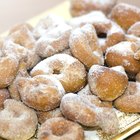
What Is the Difference Between a Bagel ...

What Does Eggs vs. Oil Do for Bread ...

Whole Eggs Vs. Egg Yolks for Sweet Bread
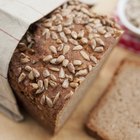
Russian Rye Bread vs. Pumpernickel

Does Yeast Cause Holes in Bread?
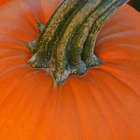
How to Make Pumpkin Bread Moist

What Happens if You Leave Bread Dough ...
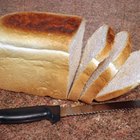
How to Bake Bread in the Oven

How to Freeze Brioche
What Gives Pumpernickel Bread Its Dark ...

Main Ingredients of English Muffins

Does It Matter if I Substitute Baking ...

How Many Calories in Gluten-Free Bread?
How to Make Homemade Bread
Quick and Easy French Bread Recipe
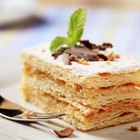
What Is Docking Used for in Baking?

Can I Substitute Bleached for ...
References
- On Food and Cooking: The Science and Lore of the Kitchen; Harold McGee
- The Kitchn: How to Make Soft & Tender Dinner Rolls
- The Professional Pastry Chef; Bo Friberg
Writer Bio
Fred Decker is a trained chef and prolific freelance writer. In previous careers, he sold insurance and mutual funds, and was a longtime retailer. He was educated at Memorial University of Newfoundland and the Northern Alberta Institute of Technology. His articles have appeared on numerous home and garden sites including GoneOutdoors, TheNest and eHow.
Photo Credits
NA/Photos.com/Getty Images